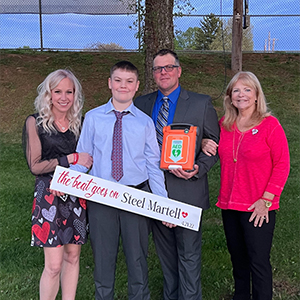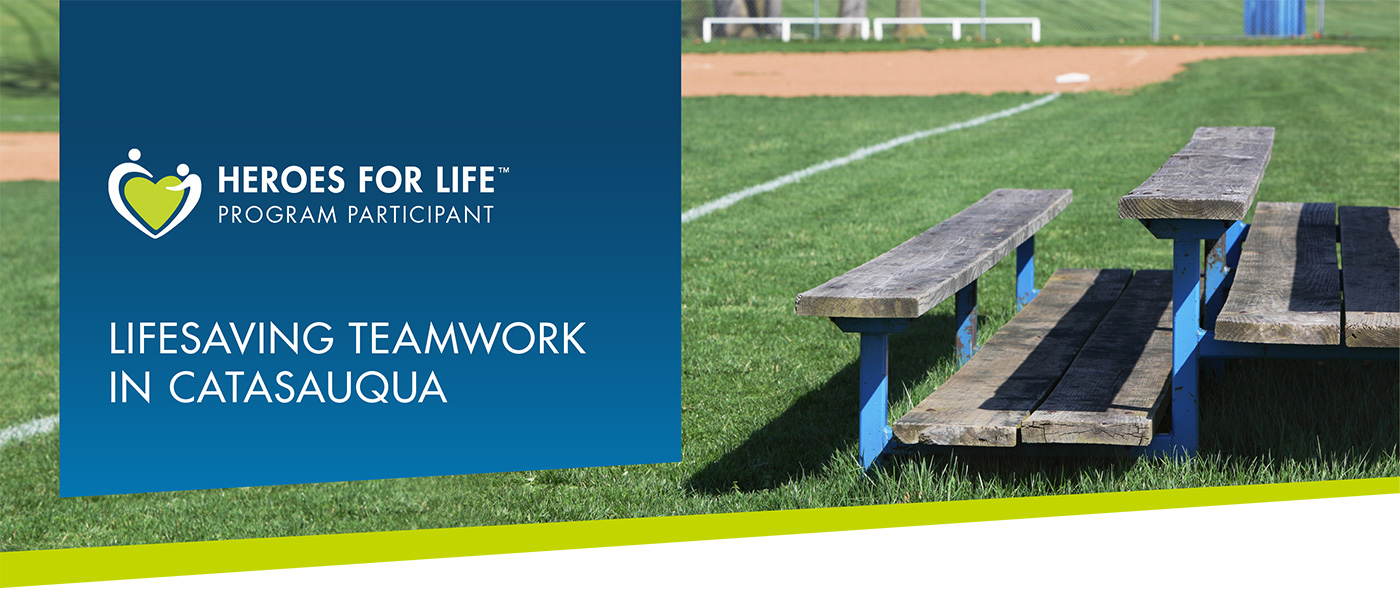The warm weather put a spring in everyone’s step on a recent day in April 2022 at Sheckler Elementary in Catasauqua, Pennsylvania. By late morning, school nurse Jennifer Churetta had only received requests for assistance with minor bumps and bruises. But that was all about to change.
Nurse Churetta heard a call come over the walkie talkie that connects all three schools in the Catasauqua School District. Gym teacher Emily DeOliveira (Mrs. Deo to her students) at Catasauqua Middle School located about a mile away urgently announced, “A student is down on the turf field. Send help. . .” The rest of the message was garbled. Jennifer made out the words “steel” and “student.” Moments later Mrs. Deo repeated her plea for help. “I need a nurse to the turf NOW.”
A district-wide response
“Mrs. Deo’s voice and something in my gut told me things were very wrong,” Jennifer says. She quickly found Sheckler Elementary principal Eric Dauberman and the two jumped in a car to drive the two blocks to Catasauqua Middle School. “I didn’t know what we were walking into,” Jennifer recalls.
When Nurse Churetta and Principal Dauberman arrived, Mrs. Deo was crouched over seventh grader Steel Martell on the turf field. Steel had collapsed face first during a game of kickball in gym class. Despite her fear of spinal injury, Jennifer gently rolled him; Steel wasn’t breathing and had no pulse.
“Mrs. Deo’s voice and something in my gut told me things were very wrong.”
— Jennifer Churetta
School Nurse, Sheckler Elementary School
People were streaming out of the school onto the field. Jennifer focused on Steel; she suspected sudden cardiac arrest (SCA) and immediately began cardiopulmonary resuscitation (CPR). “We were shouting at people coming onto the field to bring the AED,” she recalls. Each school in the Catasauqua School District is equipped with an automated external defibrillator (AED) and the middle school’s AED is kept inside the school near an exit to the field.
Middle school substitute teacher Bill Cecchini also heard the garbled call for help. He stepped out of class to see if he could assist. “The whole scene seemed like mass chaos,” Mr. Cecchini recalls. He saw the commotion on the field, and he ran over to help. He, Principal Dauberman, and Nurse Churetta took turns administering CPR compressions until someone brought them the AED.
Ultimate cooperation

Nurse Churetta connected Steel to the ZOLL® AED Plus®. It analyzed Steel’s heart and immediately recommended a shock. After the AED delivered a shock, Bill, Principal Dauberman, and Nurse Churetta continued to take turns delivering compressions, while Middle School Principal Melissa Inselmann watched the visual feedback on the AED and coaching rescuers to press harder when instructed. The AED recommended another shock. And then, just as suddenly as he’d collapsed, Steel startled and groaned.
The EMTs were on scene by this time and took over CPR. Steel was transported to a local hospital and then to Children’s Hospital of Philadelphia (CHOP), where doctors implanted a pacemaker/implantable cardioverter-defibrillator to help with Steel’s recent diagnosis of cardiomyopathy, a condition that makes it harder for his heart to pump blood to the rest of his body. Steel was released after only eight days at CHOP and is doing well.
Thankfully, Steel doesn’t remember anything about the incident that day. He and his parents are grateful for the immediate and coordinated response of the staff of both schools, most of whom had never used an AED outside of annual training. And they’re immensely grateful that the Catasauqua School District was equipped with lifesaving AEDs.



